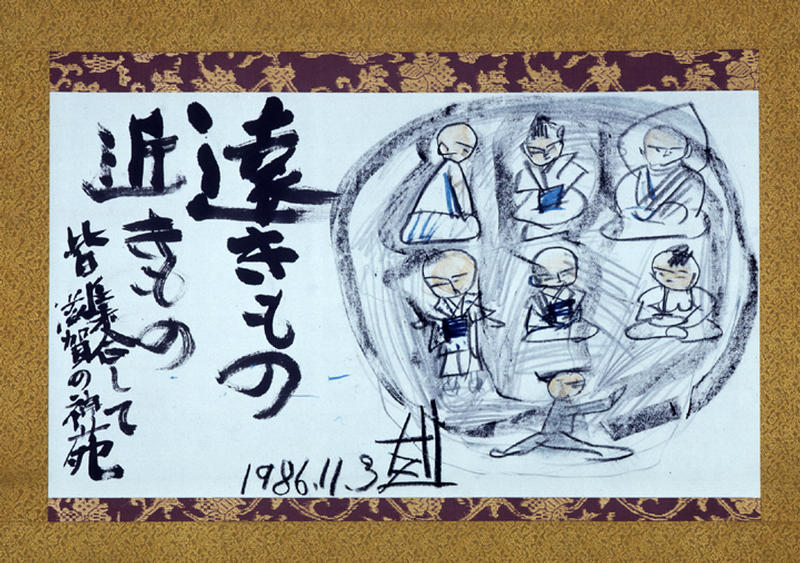遠きもの近きもの(須田剋太筆)
- 20c
- 紙本素描彩色墨書
- H-43.7 W-76
解説(春の玉手箱)
須田剋太(一九〇六~一九九〇)は、埼玉県出身の洋画家。中学卒業後、独学で油絵を学ぶ。戦前から戦後にかけて日展で特選三回、入選四回を果たす。昭和二四年(一九四九)頃抽象画家長谷川三郎の理論に共鳴し、その出会いを機に抽象画に開眼する。根底に、プリミィティブなもの、東洋思想的なものへの共感があり、特に道元の「正法眼蔵」に心酔した。その表現力は、抽象具象という枠組みを超えて自在に往来する。
この絵は、昭和六一年(一九八六)に竣工した神慈秀明会・祭事棟(設計=吉村順三、施工=中村外二工務店)のオープニング時の印象を描いたもの。
Catalogue Entry
Suda Kokuta (1906‐1990) was a western‐style painter from Saitama prefecture. After graduating from middle school, Suda taught himself oil painting. He received three Tokusen special awards and had his works accept for exhibition four times in the Nitten exhibition during the pre‐and post‐war periods. Around 1967 he espoused the theories of the abstract painter Hasegawa Saburo, and that encounter turned him towards abstract painting. He was drawn to fundamentally primitive things, those with a sense of Asian spirit. He was particularly taken with Dogen's treatise, Shobo genzo. His expressive powers were freely formed, exceeding the framework known as abstract expression.
This painting was created from the artist's impressions upon the opening of the Shumeikai's Villa Miho in 1986 (architect: Yoshimura Junzo, construction: Nakamura Sotoji office).
